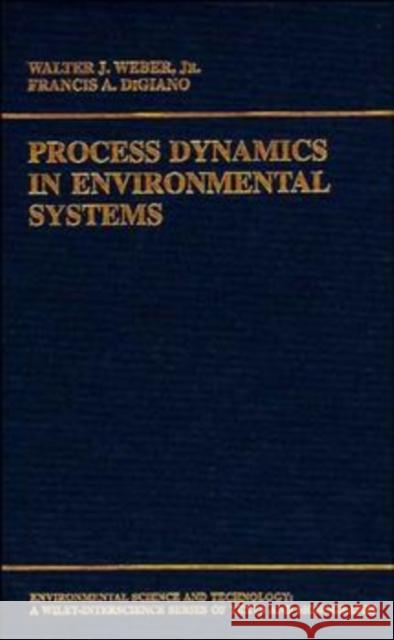Process Dynamics in Environmental Systems » książka
Process Dynamics in Environmental Systems
ISBN-13: 9780471017110 / Angielski / Twarda / 1996 / 968 str.
Providing a comprehensive analysis of the dynamic complexities of environmental systems--both natural and manmade--Process Dynamics in Environmental Systems is a unique, practical introduction to the issues and design mandates central to environmental engineering. An outgrowth of the classic text Physicochemical Processes for Water Quality Control, this new book amplifies and updates the important discussion of process dynamics begun in the original. Designed as a stand-alone reference to every aspect of process dynamics, the current book offers a complete theoretical analysis of the subject as well as numerous practical illustrations of how process models are useful in interpreting and designing a wide variety of process operations. Beginning with a broad overview of the factors and features of environmental systems and processes, the book then clearly details the general nature of fundamental processes, the character of the different types of systems in which they occur, and the way in which these factors influence process dynamics and environmental systems. The book then examines the core elements of process analysis--energetics, reaction rates, and reactor dynamics--and shows how process modeling integrates these elements in quantitative descriptions and in designs of engineered systems. Central to the structure of this book is a detailed analysis of the nature of reaction and transport phenomena--the two fundamental aspects of any environmental system. Including a look at reactions on both a macroscopic and microscopic scale, the book examines the mechanics of macroscopic and microscopic transport processes, outlining mass transport concepts basic to an understanding of reaction phenomena and reactor engineering. Subsequent chapters examine environmental reaction phenomena in the context of chemical species and transformations, including a discussion of energy balances and flows in both single-phase and multi-phase systems. A detailed look at the molecular basis for reaction kinetics in both single-phase and multi-phase systems follows. The book then broadens its focus to reactor dynamics, outlining engineering design considerations associated with reactor systems involving one phase; and then reactor systems involving transformations among and between components in two or more phases. A particularly unique feature of the book is its coverage of process dynamics for reactor systems in which transient conditions occur, at both the macroscopic and microscopic scales. A synthesis of the various aspects of process dynamics forms the book's conclusion, enabling the reader to skillfully apply the concepts of process dynamics to the interpretation and design of environmental systems. An ideal reference/handbook to the theory and uses of process dynamics, the book's practical, instructive format includes detailed example problems, assigned problems with answers, as well as suggested supplementary reading. Useful general appendices are provided, and many individual chapters also feature appendices which address issues specific to the chapter. Featuring a practical, forward looking approach to environmental systems design, Process Dynamics in Environmental Systems is a must for professionals and students interested in building the structures that preserve--and elevate--our quality of life. A blueprint to understanding and designing environmental systems...an authoritative text and handbook for the '90s and beyond Process dynamics is the science of quantifying and predicting the various components and phenomena underlying environmental systems. Designed as a comprehensive teaching text, reference, and study guide, Process Dynamics in Environmental Systems offers a complete theoretical analysis of process dynamics as well as numerous practical illustrations of how process models are useful in interpreting and designing a wide variety of process operations. Beginning with a broad overview of the factors and features of environmental systems and processes, the book then clearly details the general nature of fundamental processes, the character of the different types of systems in which they occur, and the way in which these factors influence process dynamics and environmental systems. The book then examines:
- The core elements of process analysis--energetics, kinetics, and reactor dynamics--and shows how process modeling integrates these into quantitative descriptions and the design of engineered systems
- The mechanics of macroscopic and microscopic transport processes
- Reaction rates in homogeneous and heterogeneous systems
- Engineering and design considerations associated with reactor systems involving one and two or more phases
- Reactor systems involving transient conditions at the macroscopic and/or microscopic scales











